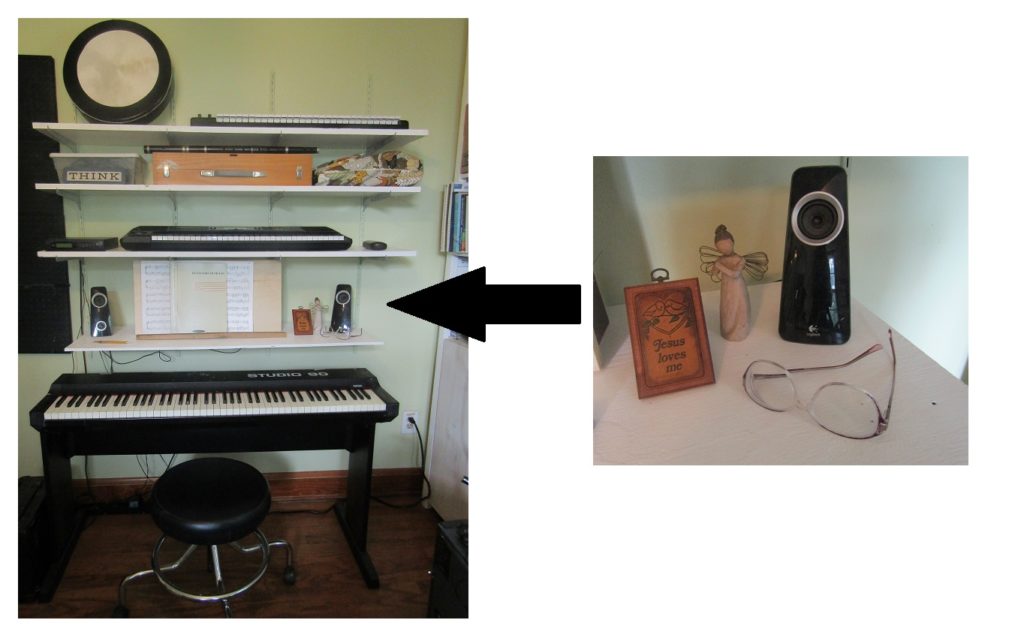Today I was thinking that I could ask fellow students at HCC to participate in the “Last of the 300 Worlds” project (LOT300W). For certain planets I could ask them for guided improvisation. (If the other students help me come up with themes, how do I give them proper credit? Ask Prof. )
I was thinking about which planets I would want guided improvisation, and which ones would I want to be mine, all mine. There are three — the intro / outro (because this is a story that I am telling, a story from my point of view), the Gervays (because they are my buddies, my favorites) and my Home Planet. Note that I have a Home, it is destroyed unexpectedly, and I find a Second Home which is in some ways more beautiful. But this time I know that the destruction is coming, and then both that home and the rest of the universe are lost.
I talked somewhere else about for me (and unlike Lisbeth Scott), music is a form of building rather than a form of self-revelation. But in the case of the Home Planet theme, I will be expressing something personal.
So I was worrying. How in the world will I be able to come up with a theme that is so beautiful and yet so heartrending? I could just picture being at the end of the school year with ONE more theme to do and it is THAT one, and I am stuck. Painted myself into a corner! Argh!!
Then the thought came “Si Bheag Si Mhor”. Pronounced “she beg she more”, this is an Irish tune, probably the first one I learned — on my first bamboo flute. If I’m remembering right, I was working my way through “100 Best Tunes for the Pennywhistle” — and I came to that one. I heard the first phrase and suddenly it was as if I had known the tune from another life. I didn’t recognize it, more like it fit into my heart like a key into a lock.
Maybe this would be good for my Home Planet theme. Am I allowed to use it? I suppose the copyright has elapsed? When Holst created his Planet suite, the Jupiter theme is like a folk-song. Was it his own tune or did he adapt it?
I also thought that I could use phrases from literal bird calls. I have a wonderful recording that I made of a mockingbird singing late at night. Unfortunately the recording has some traffic noise (hard to avoid here, even at 2 am), but if I was just borrowing from the mockingbird, that wouldn’t matter.
Borrowing? Stealing?
Dr. Greenberg says “If you’re going to steal, steal from the best”
Anyway — now I have some raw material for the most personal part of LOT300W. I don’t have to worry about racking my brains at 2 am during finals week.












